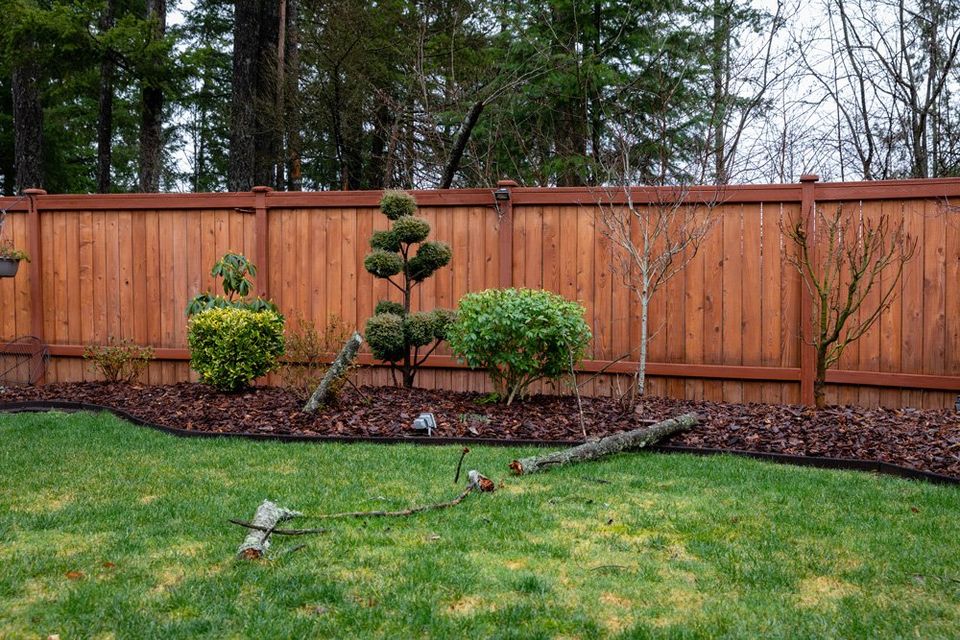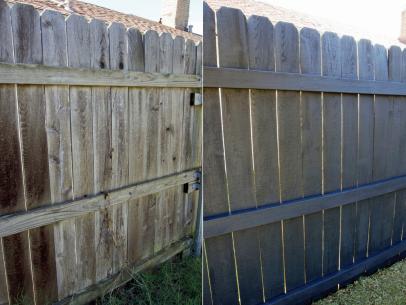The Ultimate Overview to Fence Staining: Tips and Techniques You Need to Know
In the realm of home maintenance, fencing discoloration usually becomes a task that needs attention but is regularly neglected. The process includes more than simply slapping on a layer of stain; it requires precision, understanding, and the ideal strategies to ensure a durable and visually attractive result. Whether you are an experienced do it yourself fanatic or a house owner wanting to boost the aesthetic allure of your residential property, comprehending the nuances of fence staining can make a significant difference. Let's explore the intricacies of this apparently uncomplicated yet surprisingly complicated job to open the tricks that can change your fencing from a mere boundary to a standout attribute of your outside space.
Advantages of Fencing Staining
What advantages does fencing discoloration offer to property owners seeking to boost both the look and longevity of their outdoor frameworks? Fence staining supplies various benefits that make it a preferred option for home owners aiming to safeguard and improve their fences. One of the main advantages of fence discoloration is its capacity to enhance the curb appeal of a property. By picking the appropriate stain color, homeowners can match their exterior color design, including a touch of elegance and style to their outside room - Nashville Fence Staining.
Moreover, fence discoloration aids to secure the timber from the aspects, such as rain, snow, and UV rays. This security not only avoids the wood from deteriorating and decomposing but likewise prolongs its life-span, conserving property owners cash on costly fixings or substitutes in the long run. Fence Staining. Furthermore, tarnishing produces a barrier versus parasites, such as termites and carpenter ants, which can create considerable damages to unattended timber fencings
Picking the Right Spot

Another variable to consider is the level of protection you want for your fence. Clear spots supply very little defense against UV rays and dampness, while semi-transparent and solid discolorations use raised security. If your fence is subjected to harsh climate condition, a solid tarnish may be the very best alternative to guarantee optimum toughness.

Preparing Your Fencing
Before applying the picked discolor, detailed preparation of the fence surface area is vital to ensure optimum outcomes. Begin by cleaning up the fencing to eliminate dust, particles, and any kind of old stain or repaint. Make use of a stress washer or a tight brush with a cleansing option to scrub the surface completely (Nashville Fence Staining). Permit the fencing to dry totally prior to proceeding. Next off, inspect the fence for any kind of indications of damage such as splits, splinters, or loosened boards. Make needed repair work to make sure the fencing is structurally sound.
After cleaning and repairing, it is essential to sand the fence to create a smooth surface for the stain to stick to. Utilize a medium-grit sandpaper to eliminate any type of rough patches or imperfections. Wipe down the fencing with a tack fabric to remove any staying dust bits.
Applying the Stain

When using the tarnish, work carefully area by section, beginning with the leading and relocating downwards to avoid drips and guarantee even insurance coverage. Usage long, smooth strokes to use the tarnish in the instructions of the timber grain, permitting much better penetration and an extra professional surface. Take care to keep a wet edge to stay clear of lap marks and overlap each stroke somewhat to blend the discolor flawlessly. When the first coat is full, enable it to dry according to the maker's guidelines before making a decision if a second coat is necessary for included protection and long life.
Preserving Your Stained Fence
To guarantee the longevity and visual charm of your tarnished fence, regular maintenance is important. The initial step in keeping your tarnished fencing is to frequently examine it for any indications of wear, such as fading, peeling off, or breaking. Addressing these issues immediately can prevent more damages and expand the life of your discolor. It is recommended to clean your discolored fence a minimum of once a year making use of a light cleaning agent and water to get rid of dust, crud, and mold build-up. After cleaning, permit the fencing to dry totally prior to using any type of extra treatments or stains. Additionally, it is crucial to monitor the sealer on your discolored fencing and reapply it as required to safeguard the wood from dampness and UV damages. Finally, keep plant life cut and away from the fence to stop mold and mold growth. By following these upkeep ideas, you can ensure that your stained fencing continues to be in top condition for several years to find.
Conclusion
In verdict, fencing discoloration uses countless advantages such as protection versus weathering and enhancing the aesthetic allure of your building. By picking the best tarnish, correctly preparing your fence, applying the stain correctly, and maintaining it consistently, you can ensure your fencing continues to be in leading condition for many years to come. Following these pointers and techniques will help you attain a wonderfully discolored fence that will stand the test of time.
Comments on “Elevate Your Exterior Area with Professional Fence Staining Services!”